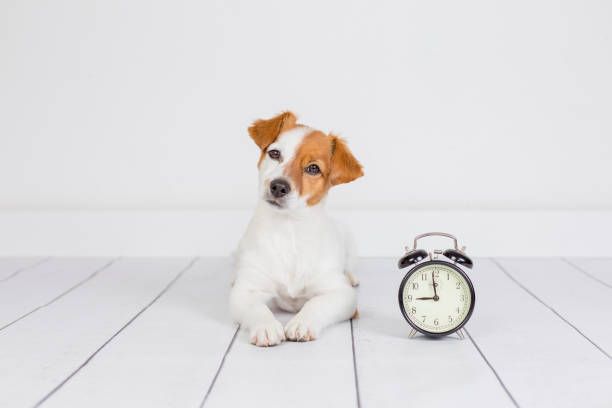Dogs are known for their unique sleeping positions, and one of the most common is sleeping on their backs with their paws up in the air. While it may look uncomfortable to us, it is a natural and comfortable position for many dogs. But why do dogs sleep on their backs? The answer lies in their behavior, anatomy, and sleep patterns.
Canine behavior and body language play a significant role in why dogs sleep on their backs. When dogs feel safe and secure in their environment, they are more likely to let their guard down and expose their vulnerable belly. Sleeping on their backs is a sign of trust and relaxation, indicating that the dog feels comfortable and at ease in their surroundings.
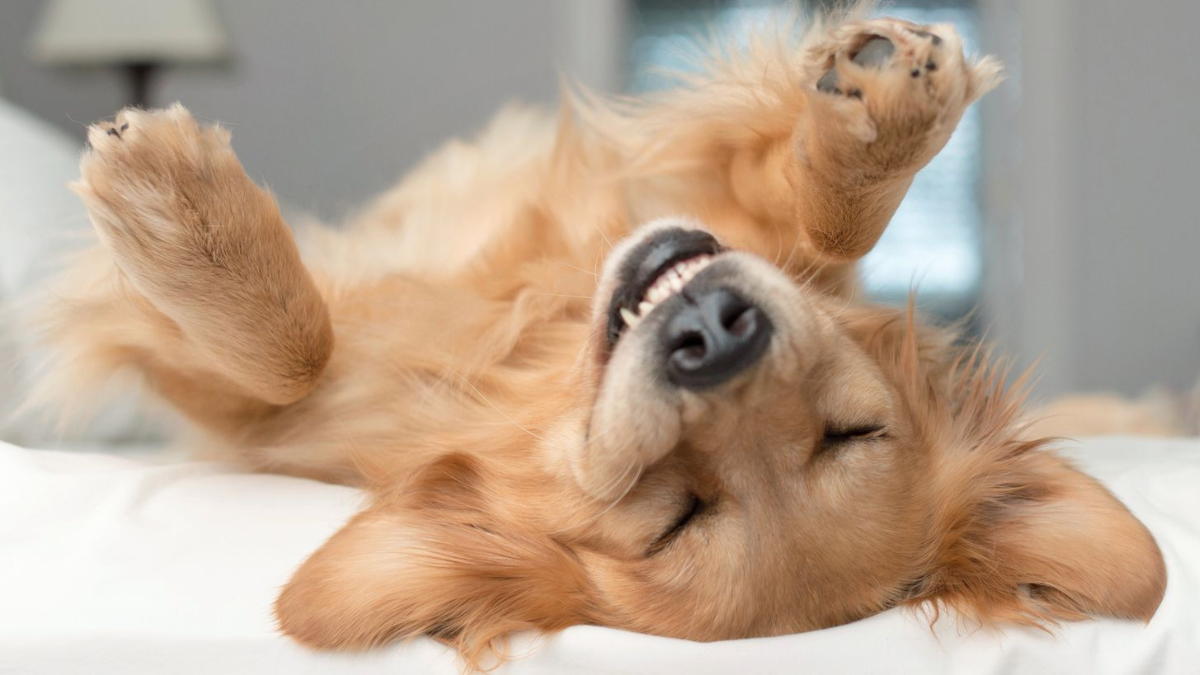
Another factor is the anatomy of dogs. Sleeping on their backs allows them to stretch out their limbs and release tension in their muscles and joints. It also helps regulate their body temperature, as the cooler air can circulate their belly and groin area.
Key Takeaways
- Dogs sleep on their backs as a sign of trust and relaxation.
- The anatomy of dogs allows them to stretch out and regulate body temperature while sleeping on their backs.
- Sleeping on their backs is a natural and comfortable position for many dogs.
Canine Behavior and Body Language
Understanding Canine Comfort Signals
Dogs, like humans, have several ways of communicating their emotions and feelings. One of the most common ways dogs express their comfort and relaxation is by sleeping on their backs. This position allows them to expose their vulnerable belly, which is a clear indication of trust and comfort.
In addition to sleeping on their backs, dogs may also stretch out their legs, wag their tail, and make relaxed facial expressions to show their comfort. Dog owners need to understand these signals to ensure their pets are feeling safe and secure.

Interpreting Vulnerability in Sleep
While sleeping on their backs can be a sign of comfort, it can also indicate vulnerability. When dogs sleep in this position, they are exposing their vital organs, making them more susceptible to attack. Therefore, it's important to ensure that the dog is in a safe and secure environment before they fall asleep.
It's also important to note that not all dogs feel comfortable sleeping on their backs. Some may prefer to curl up in a ball or sleep on their side. This can be due to their breed, size, or individual personality. As a dog owner, it's important to recognize and respect your dog's individual preferences and comfort levels.
In conclusion, sleeping on their backs is a common comfort signal for dogs, indicating trust and relaxation. However, it's important to understand the vulnerability that comes with this position and ensure that the dog is in a safe and secure environment.
Health and Anatomy
Physical Benefits of Back Sleeping
Dogs are known for sleeping in various positions, and one of the most common positions is sleeping on their backs. This position can offer several physical benefits to dogs. When dogs sleep on their backs, their muscles relax, and their limbs are stretched out, which can help reduce muscle tension and soreness. Additionally, sleeping on their backs can help improve their spinal alignment, which can reduce the risk of developing back pain or spinal problems.

Thermoregulation in Dogs
Another reason why dogs may sleep on their backs is to regulate their body temperature. Dogs have fur coats that help keep them warm, but they can still overheat if they are too warm. When dogs sleep on their backs, their bellies are exposed, which can help them cool down. The belly is one of the areas where dogs release heat, and exposing it can help regulate their body temperature. Additionally, sleeping on their backs can help dogs cool down their paws, which can also help regulate their body temperature.
Sleep Patterns of Dogs
Dogs are known for their love of sleep, with the average dog sleeping for 12-14 hours per day. However, how dogs sleep can vary greatly from breed to breed and even from dog to dog.
Common Dog Sleep Positions
One of the most common sleep positions for dogs is on their sides, with their legs stretched out. This position allows for maximum relaxation and comfort, as well as easy access to the ground in case of a quick escape. Another common position is curled up in a ball, with the nose tucked under the tail. This position is often seen in smaller dogs and can help to conserve body heat.
However, the most intriguing sleep position for dogs is on their backs, with their legs in the air. This position is often referred to as the "dead bug" position and can be a sign of complete trust and relaxation.
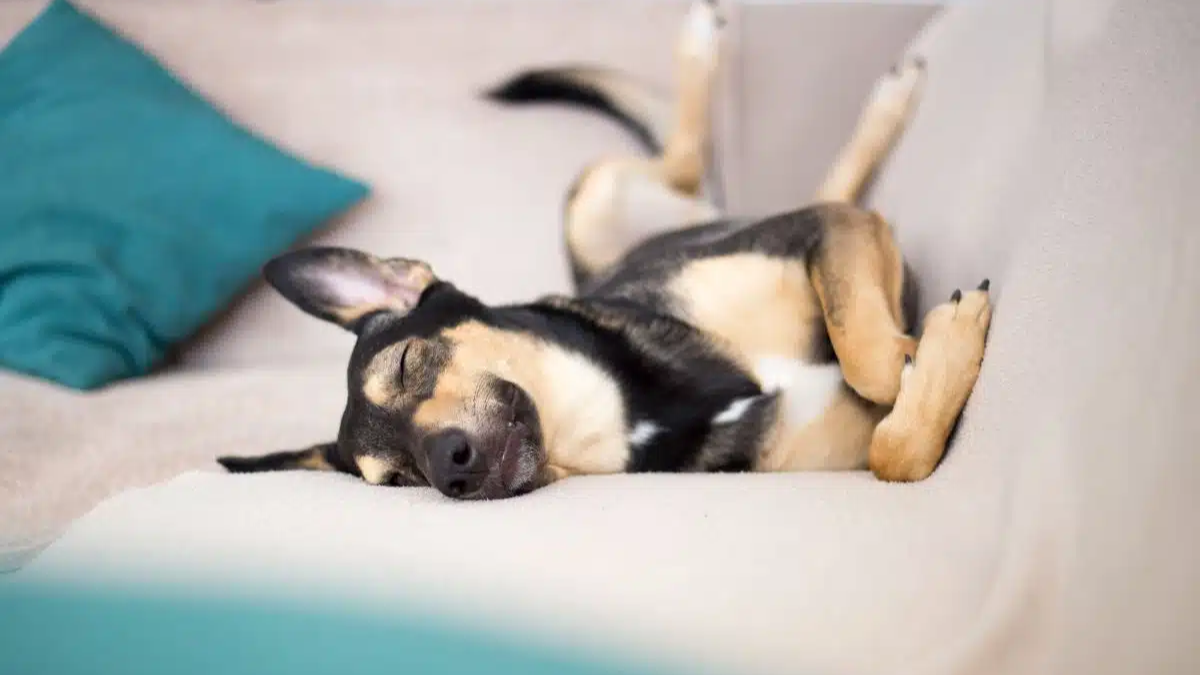
Factors Influencing Sleep Postures
Various factors play a role in shaping a dog's sleeping posture, with elements such as breed, age, and overall health contributing significantly. For instance, larger canine breeds often exhibit a preference for sleeping on their sides or stomachs, a behavior seemingly aimed at reducing pressure on their joints. Conversely, smaller dogs frequently assume a curled-up position, possibly as a means to retain body heat and maintain warmth.
Breed characteristics play a pivotal role in determining a dog's preferred sleeping posture. Larger breeds, such as Great Danes or Saint Bernards, typically have larger frames and heavier bodies. As a result, these dogs may find it more comfortable to stretch out their limbs when sleeping, opting for a side or stomach position to distribute their weight evenly. By doing so, they can alleviate pressure on their joints and maintain a more relaxed posture throughout the night. On the other hand, smaller breeds like Chihuahuas have more restful sleep while Yorkshire Terriers have more compact bodies, making them prone to curling up into a ball when they sleep. This curled-up position allows them to conserve body heat more effectively, which can be especially beneficial in colder climates or environments.
Age also plays a significant role in shaping a dog's sleeping habits. Puppies, for example, may exhibit more restless sleeping behavior as they go through periods of rapid growth and development. During these phases, they may experiment with different sleeping positions and may not adhere to a consistent posture. As puppies mature and their bodies develop, they may settle into more predictable sleeping patterns based on their breed tendencies and individual comfort preferences. Older dogs, particularly those with arthritis or other joint issues, may also adjust their sleeping posture to alleviate discomfort. Larger breeds, in particular, may transition to sleeping on their sides or stomachs to minimize pressure on their aging joints and achieve more restful sleep.
In addition to breed and age, a dog's overall health can influence its sleeping posture. Dogs with underlying health conditions or injuries may adopt specific sleeping positions to mitigate discomfort or pain. For example, a dog experiencing back pain may prefer to sleep on its side or stomach to relieve pressure on its spine. Similarly, dogs with respiratory issues may find it more comfortable to sleep in an elevated position to improve breathing. Understanding a dog's health status and any associated mobility issues can provide valuable insights into its sleeping preferences and behaviors.
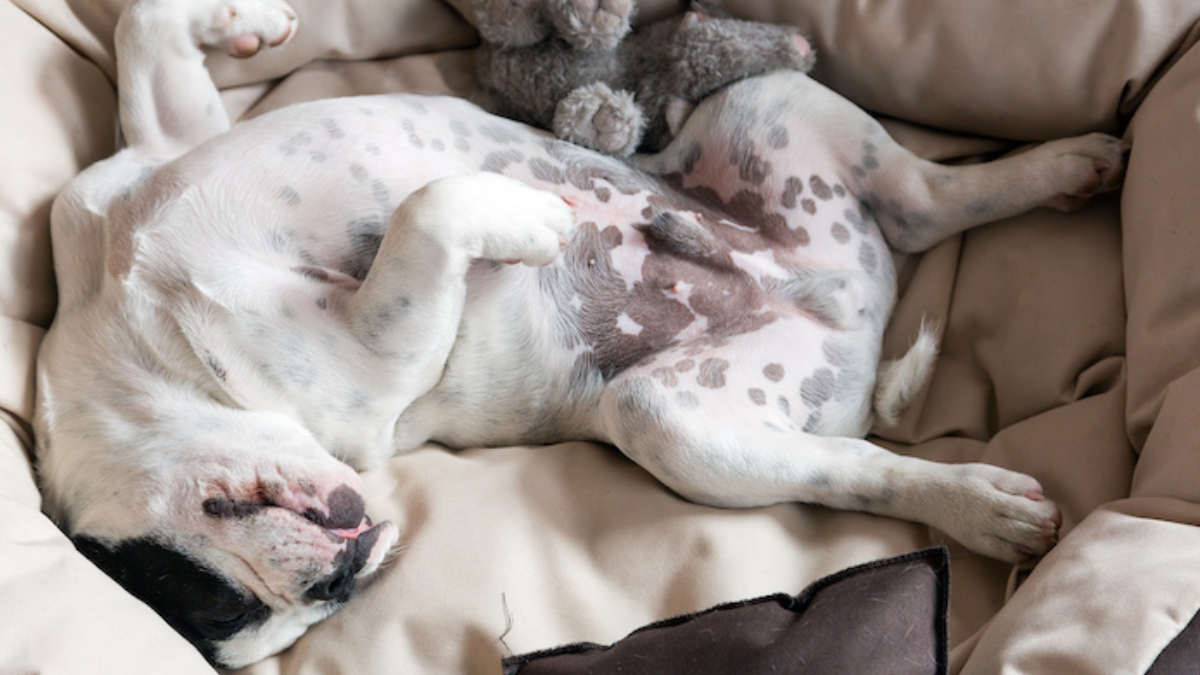
Environmental factors also play a role in shaping a dog's sleep posture. Dogs are highly adaptable creatures and may adjust their sleeping positions based on their surroundings. For instance, dogs in colder climates may curl up into a ball to conserve body heat and stay warm during the night. Conversely, dogs in warmer environments may sprawl out on their sides or stomachs to dissipate heat and remain cool. Factors such as the type of bedding available, the presence of other pets or family members, and noise levels in the environment can also influence a dog's choice of sleeping position.
Overall, a dog's sleeping posture is influenced by a complex interplay of factors, including breed tendencies, age, health status, and environmental conditions. By understanding these factors and observing their dog's behavior, pet owners can provide a comfortable sleeping environment that promotes restful sleep and overall well-being for their canine companions.
Additionally, dogs who are feeling anxious or stressed may not be able to fully relax and may avoid sleeping on their backs. Conversely, dogs who feel completely comfortable and safe in their environment may be more likely to sleep in this position.
In conclusion, how dogs sleep can provide insight into their overall well-being and level of comfort. By understanding the common sleep positions and factors that influence sleep postures, dog owners can better understand and care for their furry companions.
Environmental and Social Influences
Impact of Environment on Dog Behavior
Dogs are highly adaptable creatures, and their sleeping positions can be influenced by their environment. For example, if a dog is sleeping in a warm environment, they may sleep on their back to expose their belly to the cool air. Similarly, if a dog is sleeping in a confined space, they may curl up into a ball to conserve heat and make themselves feel more secure.
Furthermore, dogs that spend a lot of time on hard surfaces, such as concrete or tile floors, may prefer to sleep on their backs to relieve pressure on their joints. In contrast, dogs that sleep on soft surfaces, such as a bed or a couch, may prefer to sleep in other positions that provide more support.
Social Dynamics and Sleep Positions
Dogs are social animals, and their sleeping positions can also be influenced by their social dynamics. For example, dogs that are confident and dominant may sleep on their back as a way to communicate their status to other dogs. On the other hand, more submissive dogs may sleep in other positions, such as curled up in a ball, to make themselves appear smaller and less threatening.

In addition, dogs that are part of a pack may sleep near each other, and their sleeping positions may be influenced by the positions of other dogs in the pack. For example, a dog may sleep on their back if they are surrounded by other dogs who are sleeping in that position.
Overall, a dog's sleeping position can be influenced by a variety of factors, including their environment and social dynamics. By understanding these influences, dog owners can better understand their dog's behavior and provide a comfortable sleeping environment for their furry friends.
Training and Habituation
Influence of Training on Sleep Behaviors
Dogs are highly trainable animals, and their sleep behaviors can be influenced by the training they receive. For example, if a dog is trained to sleep in a crate, they may feel more comfortable and secure sleeping on their back with their belly exposed. This is because the crate provides a sense of safety and security, allowing the dog to let their guard down and relax.
On the other hand, if a dog is trained to sleep on a bed or couch, they may be more likely to sleep on their side or stomach, as these positions allow them to curl up and feel more secure. It's important to note that while training can influence a dog's sleep behaviors, it's not the only factor at play.
Establishing Sleep Routines
Establishing a consistent sleep routine can also play a role in a dog's sleep behaviors. Dogs are creatures of habit, and they thrive on routine and structure. By establishing a consistent bedtime routine, such as going for a walk, having a snack, and then settling down in their crate or bed, dogs can learn to associate these actions with sleep.
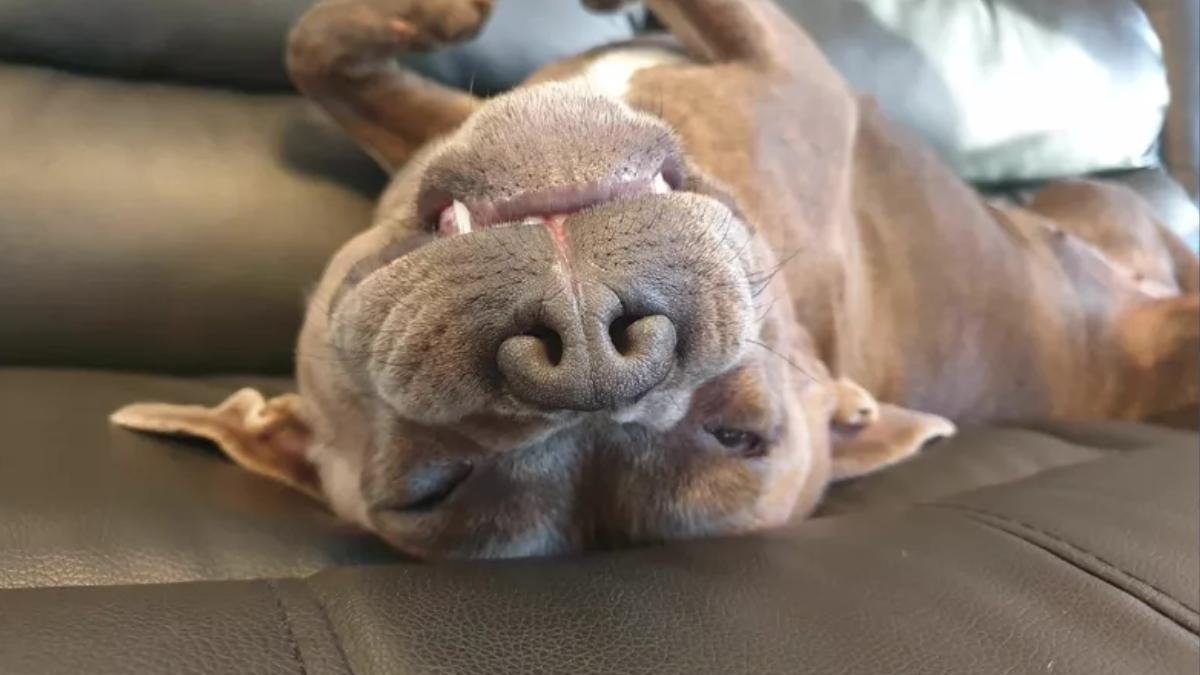
Over time, this routine can help dogs feel more relaxed and comfortable when it's time to sleep, and they may be more likely to sleep on their back with their belly exposed. It's important to be patient and consistent when establishing a sleep routine, as it can take time for dogs to adjust to new habits and routines.
In summary, training and habituation can play a role in a dog's sleep behaviors. By providing a sense of safety and security through training and establishing a consistent sleep routine, dogs may be more likely to sleep on their back with their belly exposed. However, it's important to remember that each dog is unique and may have their preferences when it comes to sleep position.
Conclusion:
In conclusion, the question "Why do dogs sleep on their backs?" elicits a myriad of intriguing possibilities, shedding light on the nuanced behaviors of our beloved canine companions. While definitive answers may remain elusive, several compelling theories provide valuable insights into this curious phenomenon.
One hypothesis proposes that sleeping on their backs allows dogs to regulate their body temperature more effectively, offering comfort and relief, particularly in warmer climates. This posture may also symbolize a sense of trust and security, showcasing a deep bond between dogs and their environment or human companions.
Furthermore, the act of sleeping on their backs could serve a physiological purpose, such as relieving pressure on muscles and joints, contributing to their overall well-being and restfulness.
Regardless of the exact motivation, the sight of dogs sleeping peacefully on their backs captivates our attention and underscores the intricate relationship between humans and their furry friends. As we continue to explore the complexities of canine behavior, the phenomenon of dogs sleeping on their backs remains a compelling subject worthy of further study and admiration.
Frequently Asked Questions
- What does it indicate about a dog's comfort level when they sleep on their back?
- When dogs sleep on their back, it generally indicates that they feel comfortable and safe in their environment. Dogs are vulnerable when they are sleeping, and sleeping on their back exposes their belly and vital organs. If a dog feels threatened or uncomfortable, they are unlikely to sleep in this position.
- Is sleeping on their back a sign of trust from a dog?
- Yes, sleeping on their back can be a sign of trust from a dog. As mentioned earlier, dogs are vulnerable when they are sleeping, and they will only sleep in this position if they feel safe and secure in their environment. If a dog trusts their owner or the people around them, they are more likely to sleep on their back.
- Are there any health benefits or risks for a dog sleeping on its back?
- There are no significant health risks associated with sleeping on their back. However, there are some health benefits. When dogs sleep on their back, it helps to stretch their muscles and relieve tension in their body. Additionally, it can help to regulate their body temperature, especially during hot weather.
- Can a dog's sleeping position affect their behavior or mood?
- Yes, a dog's sleeping position can affect their behavior and mood. When a dog is sleeping, their body is relaxed, and their mind is at ease. If a dog is sleeping in an uncomfortable position or environment, they may wake up feeling anxious or stressed, which can affect their behavior and mood throughout the day.
- How should owners interpret a dog exposing their belly while sleeping?
- When a dog exposes their belly while sleeping, it is a sign that they feel comfortable and relaxed. It is also a sign of submission, as exposing their belly makes them vulnerable. Owners should interpret this as a positive sign and ensure that their dog feels safe and secure in their environment.
- What might influence a dog to choose to sleep on their back rather than other positions?
- The position a dog chooses to sleep in can be influenced by a variety of factors, including their comfort level, the temperature, and their mood. Some dogs may prefer to sleep on their back because it helps to regulate their body temperature, while others may prefer to sleep on their side or stomach. Ultimately, the position a dog chooses to sleep in will depend on their individual preferences and needs.
